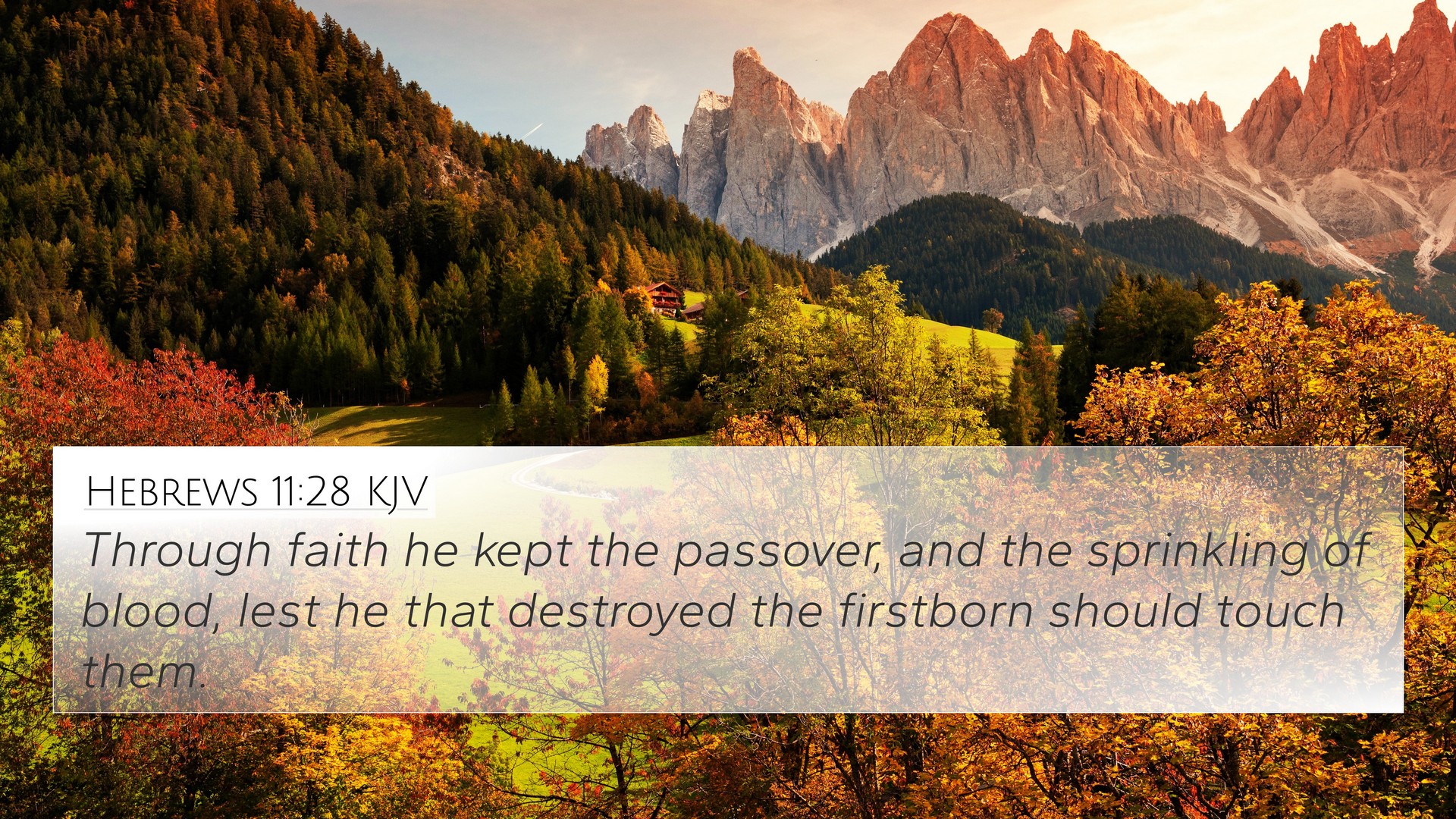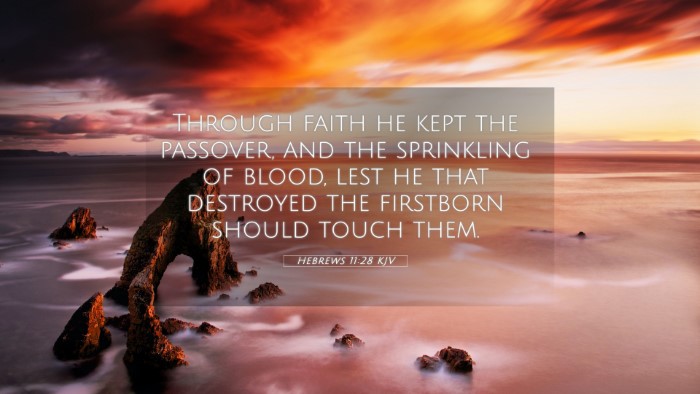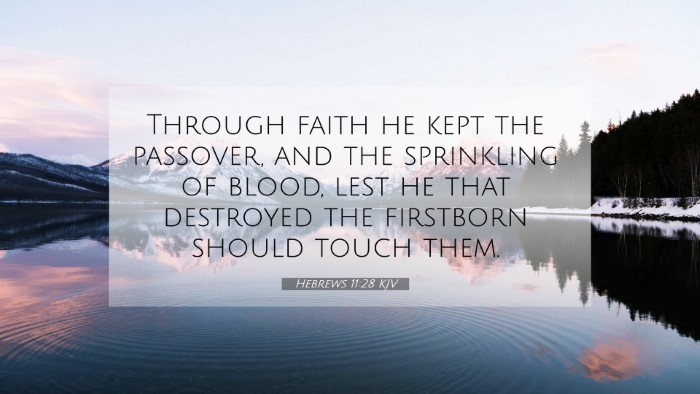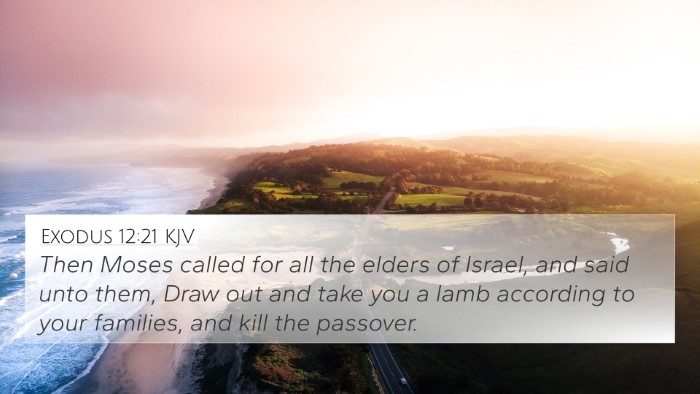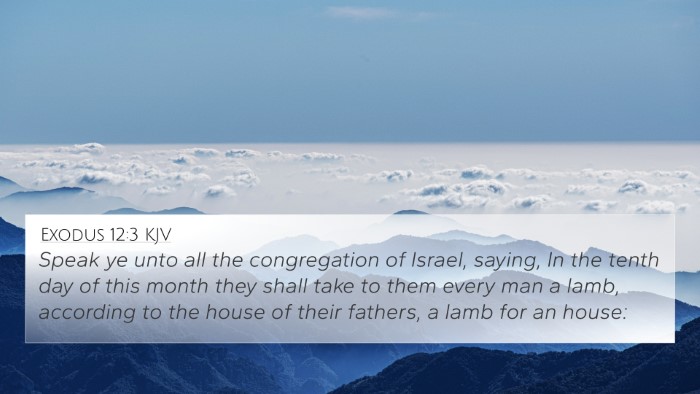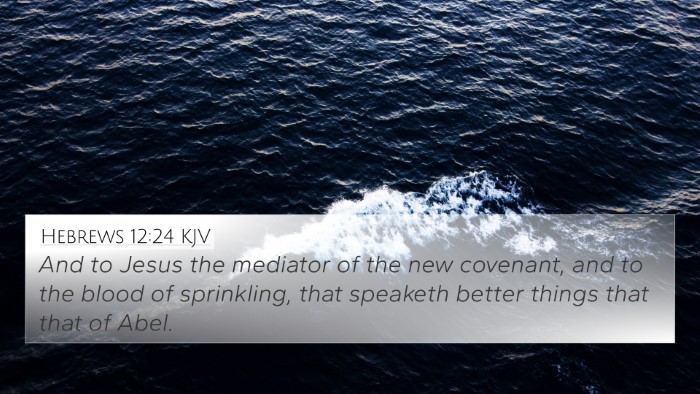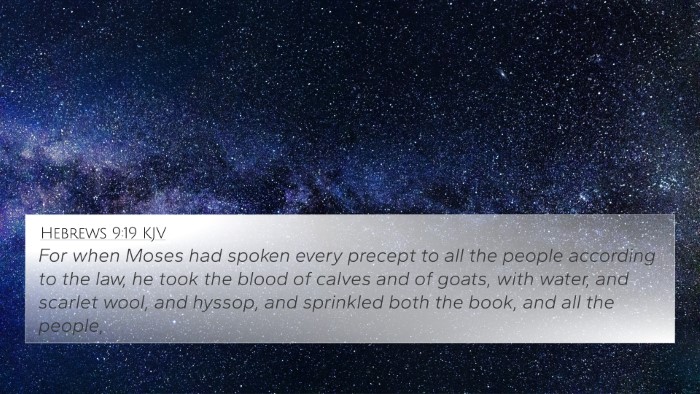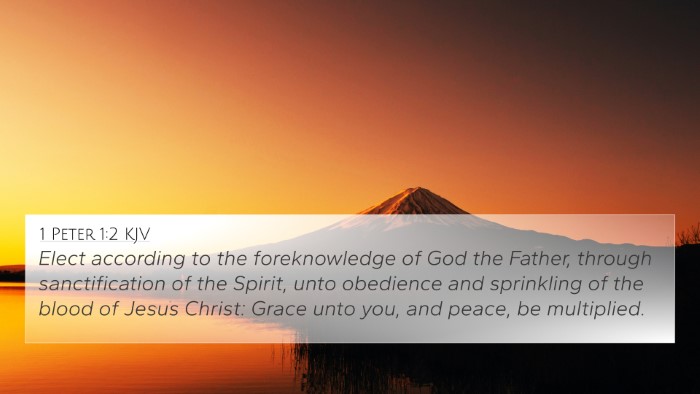Understanding Hebrews 11:28
Hebrews 11:28 states, "Through faith he kept the Passover, and the sprinkling of blood, lest he that destroyed the firstborn should touch them." This verse highlights the faith and obedience of Moses, showcasing his critical role in the events leading to the Exodus of the Israelites from Egypt.
Overview of the Verse
This verse is situated within the "Hall of Faith" in Hebrews 11, where the author enumerates the great acts of faith displayed by biblical figures, utilizing their examples to encourage believers. The primary focus is on Moses' observance of the Passover, which was an act of faith that required not only belief but also decisive action based on God's command.
Key Themes in Hebrews 11:28
- The Role of Faith: Moses’ faith was manifest in his actions—he followed God's instructions without hesitation.
- The Significance of the Passover: The Passover represented God's deliverance and the protection of His people from judgment.
- Obedience to God's Commands: Moses' observance demonstrates the importance of adhering to God's directives, even when confronting difficult circumstances.
Commentary Insights
Public domain commentaries provide rich insights into this verse. Matthew Henry emphasizes the necessity of faith for securing God's protection, indicating that it is not merely good intentions but the active application of faith that leads to divine deliverance. Albert Barnes elaborates on the importance of the blood sacrifice in the Passover ritual, linking it to the sacrificial system established in the Old Testament, noting that such practices prefigured the ultimate sacrifice of Christ. Adam Clarke discusses the cultural and historical context of the Passover, highlighting its significance in Jewish tradition as well as its prophetic implications for Christ, the Lamb of God.
Related Bible Cross-References
Hebrews 11:28 can be cross-referenced with the following verses that enhance the understanding of its significance:
- Exodus 12:12-13 - Describes the institution of the Passover and the significance of the blood on the doorposts.
- 1 Corinthians 5:7 - Paul refers to Christ as our Passover lamb, linking the old covenant with the new covenant.
- Romans 3:25 - Discusses Christ's sacrifice as an atonement that parallels the blood offered during the Passover.
- John 1:29 - "Behold the Lamb of God," emphasizing Jesus’ role in fulfilling the Passover symbolism.
- Hebrews 9:12-14 - Describes Christ entering the Most Holy Place by His own blood, connecting with the blood sprinkling of the Passover.
- Acts 12:23 - Reflects on the consequence faced by disobedience, paralleling the destruction during the Exodus.
- Matthew 26:28 - Jesus alludes to His blood being poured out for many, linking to the Passover's meaning.
Thematic Connections
In analyzing Hebrews 11:28, we find thematic connections with the ideas of salvation, sacrifice, and redemption central to both Old and New Testaments. The act of faith displayed by Moses in keeping the Passover illustrates a broader biblical narrative of God's plan for deliverance through faith and obedience.
Practical Applications
When studying Hebrews 11:28 and its parallel verses, individuals are encouraged to reflect on their own faith journey. Just as Moses acted in faith despite potential dangers, believers are called to trust in God's promises and obey His commands. The example of the Passover can inspire Christians today to remember the ultimate sacrifice of Jesus and the protective power of His blood over their lives.
Conclusion
Hebrews 11:28 encapsulates the essence of faith as it relates to God's promises and divine protection. It serves as a reminder of the transformative power of faith in action and the continuity of God's redemptive work throughout Scripture. Through comparative Bible verse analysis, one can enrich their understanding of this verse and its place within the larger narrative of the Bible.
